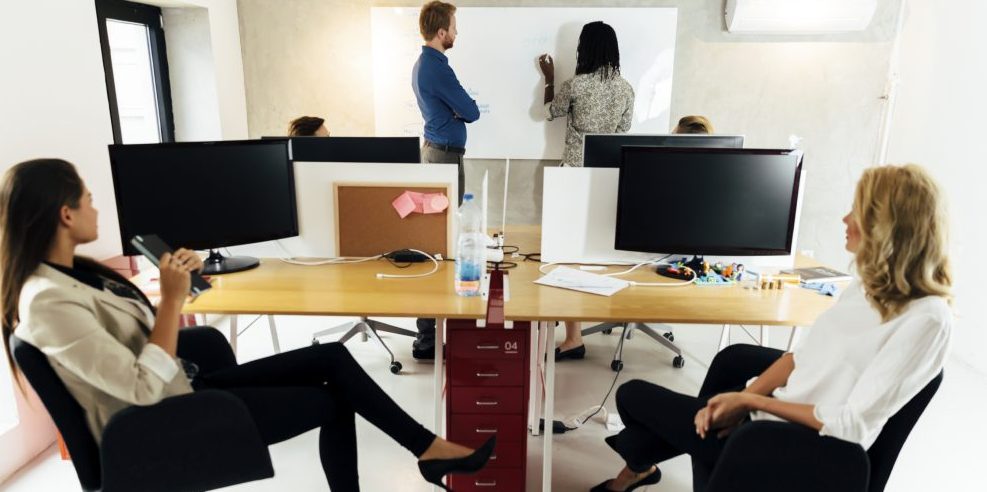Keith Ferrazzi runs a research institute that focuses on human behavior change. He has some ideas on how to reform staff meetings from boring, dull report out sessions to collaborative, problem solving, creative gatherings.
Leave the Reports at the Door
He claims organizing a staff meeting as a report out get-together is like a basketball coach making his team practice free throws while the rest of team watches. The team would be better off scrimmaging instead of concentrating on individual skills players can develop on their own. Reading mindless reports to each other is equivalent to a bunch of third graders reciting to each other in a circle. Staff meetings that solve problems are scrimmages where people throw elbows, dive on the floor for loose balls and push each other to get better.
Send the Subject Matter of the Meeting out First
He maintains this housekeeping item gets everyone on the same page. It also gets the attention of the part of the organization that ultimately owns the problem that needs to be solved. The owner of the issue should be prepared to get a double barrel shot of candor and honesty from their colleagues. At the end of the day, everyone needs to understand the owner ultimately makes the call on next steps.
Distribution of the meeting topic in advance also prepares other participants to get their ideas ready for the ensuing give and take of collaboration. It essentially forces the team to create and innovate before the meeting even begins.
Break the Staff into Smaller Groups
He argues that this tactic promotes more sharing of ideas and lessens the probability that powerful personalities dominate the discussion. Smaller group sessions create more group ownership of their recommendations since they do not want to look bad in front of the bigger audience. It forces consensus and cohesiveness that everybody has each other’s backs.
It uses peer pressure in a way to come up with the best ideas and evades conflict avoidance that often paralyzes group think. It confronts social loafing where others sit back and let someone else to the heavy lifting. It stymies production blocking that limits the discussion to only one proposal.
Designate a Yoda
He contends the bigger group discussion needs a facilitator that can promote the candor, honesty, truthfulness and diversity of opinion necessary to flush out great innovative ideas. This person watches body language and gets a sense of the body politic to ensure that everyone is bringing their full selves to the discussion.
Reserve the Right to Strong Opinions
He asserts that leaders of this kind of process have to guarantee the creation of safe, healthy, emotional climates where people can say what is on the minds and in their hearts. At the same time, people have to understand that regardless of the strength or intensity of their opinions, there is no guarantee that their views will win the day. The only assurance is that their estimations will be fairly and reasonably considered.
Think about it for a moment. What have been the individual and organizational costs of not tackling real issues as a result of the perception that people cannot bring their diverse selves to a conversation?
Inclusive workplaces stop such thinking in its tracks. They know it is only when people come out from behind themselves and invest fully in the discussion that they can ever reach their full potential.





Leave a Reply
You must be logged in to post a comment.